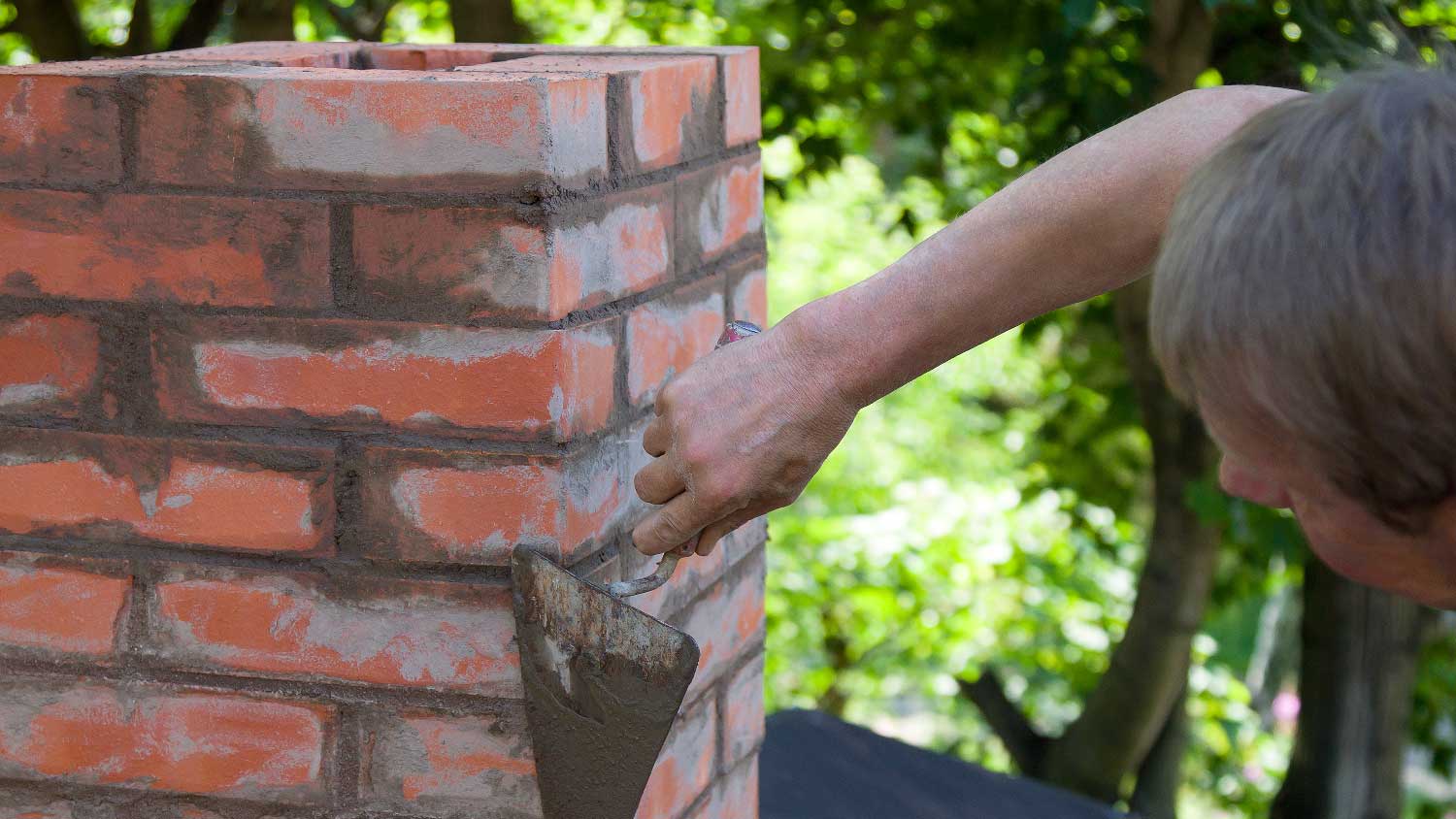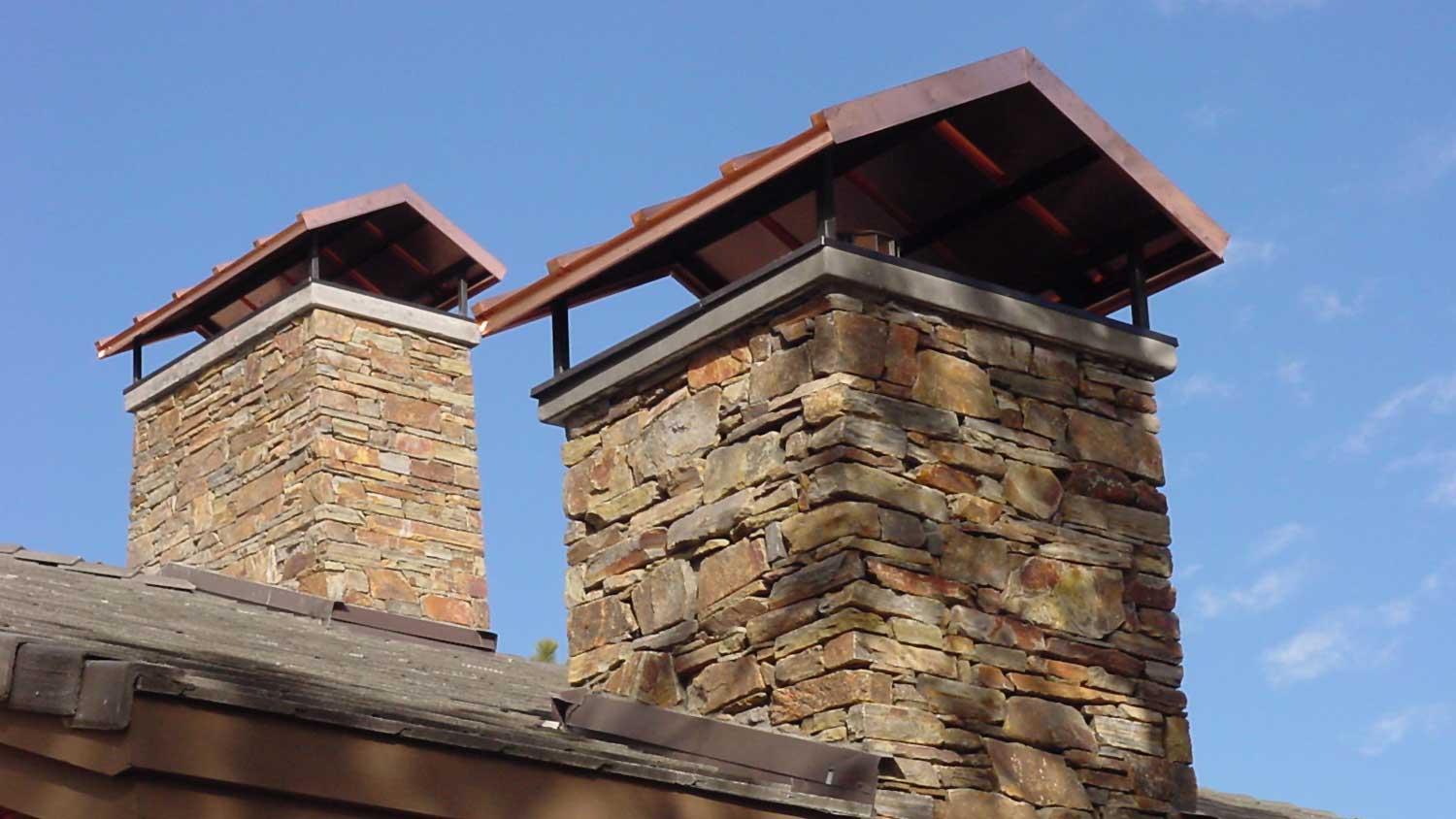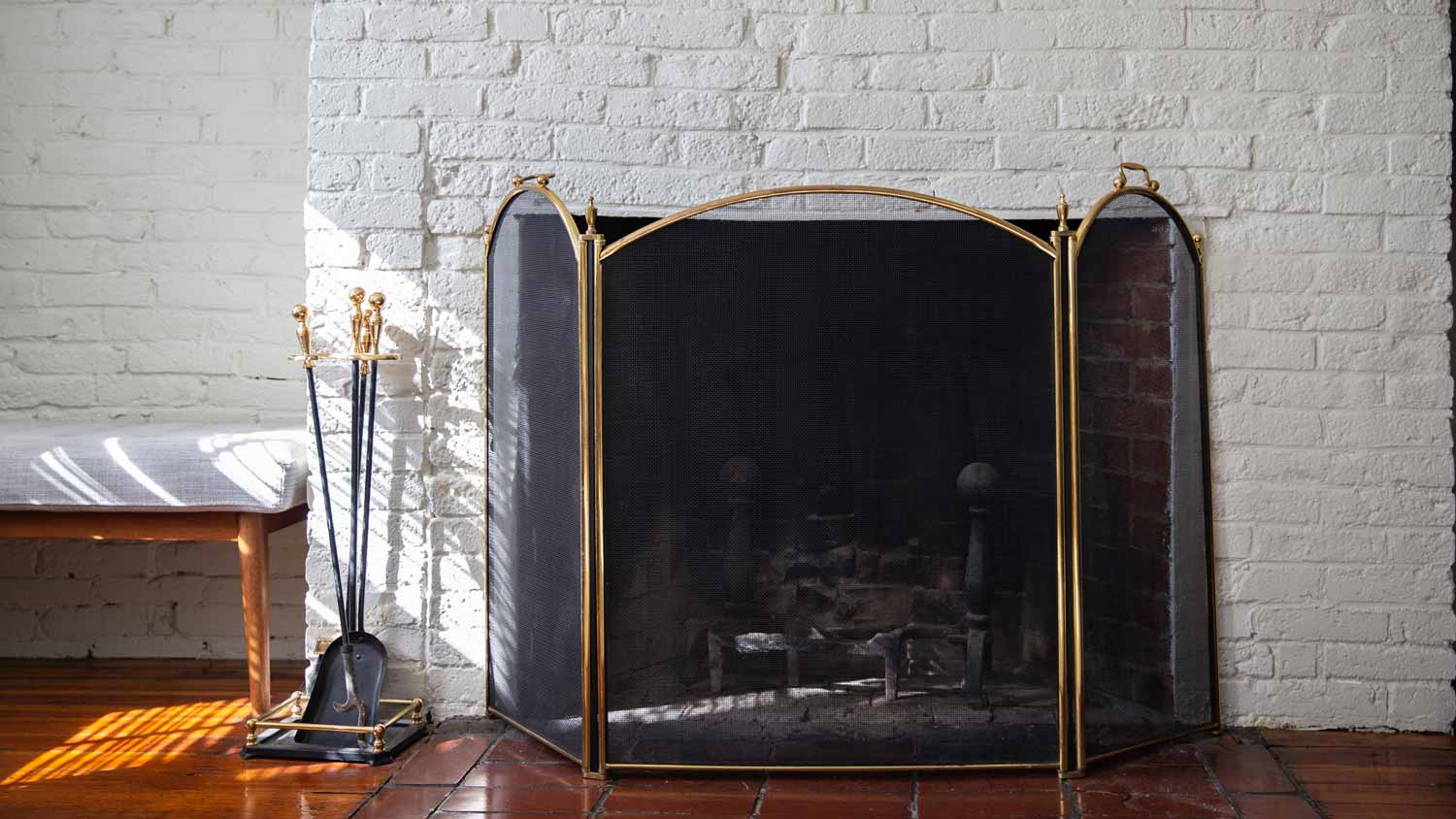
Discover the average chimney tuckpointing cost, key price factors, and expert tips to help you budget and save on your next chimney repair project.
A bit of chimney maintenance keeps your fireplace in tip-top shape


Cozying up beside a roaring fire is one of the best parts of having a fireplace in your home. But regular chimney maintenance is an absolute must to ensure everything works as it should. Warm up whenever you want with nine tips that keep your chimney clean, safe, and in good working order.

Reduce the need for frequent professional visits by regularly cleaning the inside of your fireplace. Big buildups of soot and ash are the root of most chimney problems, but regular dusting will prevent them from forming in the first place. How often you dust depends on how often you’re using your fireplace. If that’s every day, try to clean up weekly. If you’re only lighting it up once a week, you can get away with a monthly cleaning session.
Ensure your fireplace has completely cooled down by waiting at least 36 hours before getting the cleaning process started. Then, lay down a tarp to collect debris, put on a pair of heavy-duty gloves, and use a shovel to scrape the ashes from the chimney base into a metal bucket. Once you’ve double-checked that nothing is still burning, it’s safe to transfer the contents of the bucket to the trash.
Cracked brick and mortar can lead to leaks and water damage, so it will be more expensive and time-consuming to repair the longer you wait to do so. In general, it’s wise to recruit the help of a contractor for a chimney inspection and to solve a problem like this because it requires special tools and equipment that you might not have or know how to use.

Towering trees may provide plenty of cooling shade for your house, but they can also contribute to chimney problems. Heavy tree branches can damage your chimney crown if they break off during a storm and fall onto the roof. Branches also present a fire risk, as their leaves can fall into the chimney and interfere with the chimney's drafting ability.
Play it safe by trimming all nearby trees to a height at least two feet shorter than the chimney itself.
If a foul odor is emanating from your fireplace, creosote deposits—common byproducts of wood burning—are probably to blame. While a good chimney cleaning will usually be enough to get rid of the smell, you can also use commercial chimney deodorants or baking soda to eliminate any scents that linger.
A fireplace damper is a gadget built into the flue that can be closed when the chimney isn’t in use to keep out water and moisture. Because it’s manually operated, you’ll be personally responsible for opening it before starting a fire and closing it once everything has sufficiently cooled down. Shutting the damper while a fire is still blazing or ashes are still burning is hazardous and should be avoided at all costs.
And if all that lingo has your head spinning a bit, well, it may be time to brush up on the anatomy of your chimney before giving this tool a go.
Not all firewood is created equal. Some will leave you with far more creosote residue and unpleasant odors than others. When in doubt, choose hardwoods like birch, beech, and oak over softwoods like cedar and spruce, because they burn less quickly and create fewer ashes as a result.
Lighter fluid seems like a shortcut to a roaring fire, but it's not recommended for use in indoor fireplaces for a few reasons. Lighter fluid can cause a fire to grow too large, too quickly, increasing the risk of a house fire. Plus, it contains ingredients, such as methanol, which produce unpleasant fumes.
Instead of turning to lighter fluid, learn how to properly build a fire from scratch, starting with kindling and adding larger logs later.

A properly functioning fireplace screen will keep your mantle pristine and prevent ashes from entering your home. Replace your screen the moment you notice any damage to prevent any bigger problems.
If it’s been months (or even years) since the last time you cleaned your chimney, it’s usually a better idea to hire a local chimney sweep than attempt to do it yourself. Depending on the condition your chimney's in, you may need to hire a local chimney repair company to get it looking as good as new. Signs your chimney may need major repairs include unusual amounts of smoke and crumbling bricks. A pro might recommend parging the chimney, which smooths the smoke chamber for better airflow and safer fires.
What's the number one reason to maintain your chimney? Safety. Your chimney needs regular cleaning and maintenance to reduce the risk of fire.
Wood-burning fires produce creosote, a flammable substance that can build up in your chimney. When it's not cleared away regularly, creosote can increase the risk of chimney fires. A buildup of creosote also narrows the opening in the chimney, keeping it from properly ventilating.
The chimney of a gas fireplace also needs to be properly vented to allow carbon monoxide, an odorless gas that can make you very sick, to escape.
Any time you burn a fuel, such as gas, carbon monoxide is produced and can build up inside your home without adequate ventilation. In the early stages, carbon monoxide poisoning can feel like the flu. With significant exposure, it can be fatal, per the Centers for Disease Control and Prevention.
Along with properly maintaining your chimney, you can reduce your risk of carbon monoxide exposure by installing carbon monoxide detectors in your home.
Regular chimney maintenance also extends the life of your chimney, saving you from costly repairs or replacement. It allows you to spot and fix any issues before they become major problems. By keeping the buildup of flammable materials to a minimum, regular maintenance helps to prevent damaging fires.
The total cost to clean a chimney ranges between $130 and $380, though you can expect to pay an average of $255. The exact cost depends on numerous factors, including the following:
The type of fireplace (wood-burning, pellet stove, gas fireplace)
The accessibility of your chimney
The time since your last chimney cleaning
Any additional services needed
It generally costs less to clean a chimney if you have a gas fireplace because gas fires produce less residue, which makes cleaning easier. If you have a wood-burning fireplace, you’ll likely pay the higher end of the cost range. The price can also increase if your roof has a steep pitch or is difficult to access since the chimney sweep requires additional safety equipment to complete the job.
Even the handiest homeowner should leave chimney sweeping to the pros. DIY chimney cleaning can be extremely dangerous. Not only do you risk your safety by working at a great height, but you can also expose yourself to hazardous materials like soot and ash, which can affect your physical health.
DIY chimney cleaning can also leave creosote behind, increasing the risk of a fire in the chimney that can spread to the house. And if you don’t do the job properly, you could expose your family to carbon monoxide, which can be fatal.
Unless you have professional chimney cleaning experience, this is one job where the cost savings aren’t worth the risk of taking on this job. Instead, get quotes from local chimney sweeps with the experience and equipment to keep your chimney clear and safe.
From average costs to expert advice, get all the answers you need to get your job done.

Discover the average chimney tuckpointing cost, key price factors, and expert tips to help you budget and save on your next chimney repair project.

The average cost to repair or replace a chimney crown depends on the damage, material, and any other chimney maintenance services bundled into your project.

Chimney repair costs can vary by the type of chimney you have and the required repairs. Use this guide to help you estimate project costs.

Before you light that fire, learn how to open a chimney flue safely in three quick steps. We also share what to do if it needs to be fixed.

A worn-out chimney can threaten the strength of your masonry. Learn how to repoint a chimney for durability and aesthetics with this guide.

If you have a new chimney or chimney liner, you may wonder if metal chimney flues need cleaning. The short answer is yes, you need to clean a metal chimney flue.